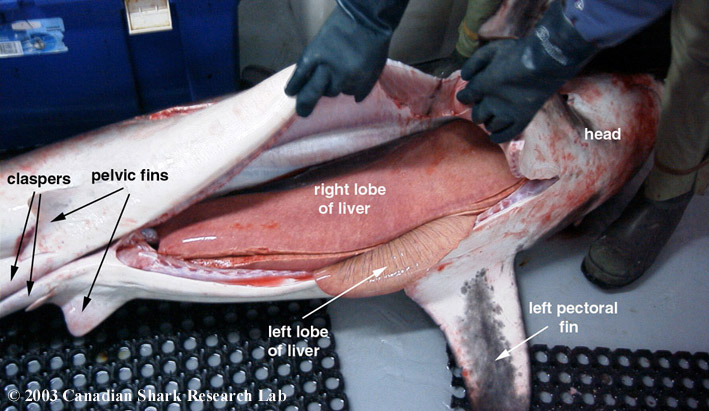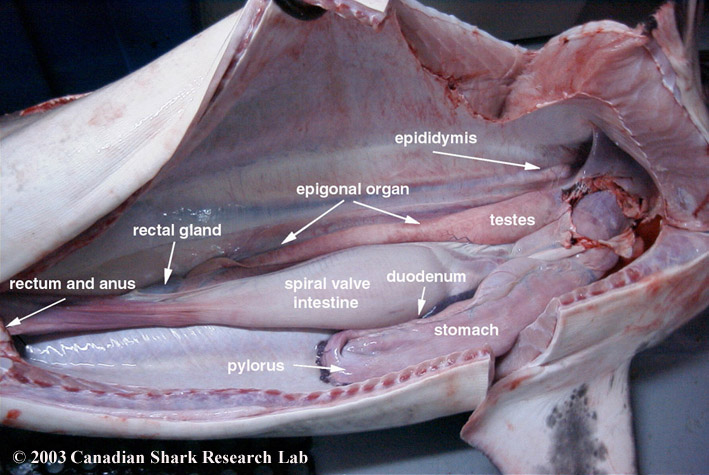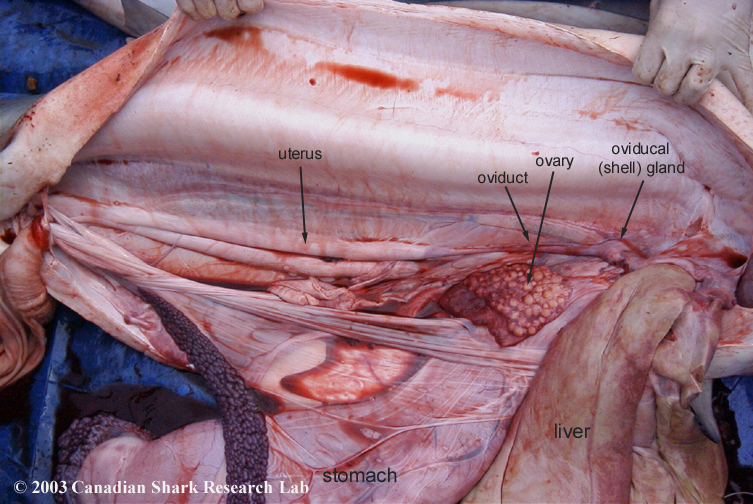Internal Anatomy
Upon incision of the belly from the pelvic fins to the pectoral fins the first organ encountered is the liver. The liver of sharks occupies most of the body cavity. This large, soft and oily organ can comprise up to 25% of the total body weight. It serves two functions within the shark. The first is as an energy store since all fatty reserves are stored here. The second function of the liver is to serve as a hydrostatic organ. Oils that are lighter than water are stored in the liver. This decreases the density of the body providing buoyancy to counteract the sinking tendency of sharks.
Aside from the liver, the stomach can be seen within the body cavity. Often found within the stomach are the contents of the sharks last meal. The stomach itself terminates at a constriction known as the pylorus, which leads to the duodenum and then to the spiral valve intestine. The spiral valve intestine is an internally coiled organ that increases the surface area across which nutrients can be absorbed. The spiral valve intestine empties into the rectum and anus which in turn empties into the cloaca. The claoca is the chamber where the digestive, urinary and genital tracts all open to the outside.
Also easily found within the body cavity is the pancreas. The pancreas is a digestive gland with two pink lobes. Secretions pass from this organ to the duodenum from the ventral lobe through a small duct.
There are two other organs that are visible but do not belong to the digestive system. The first is the spleen, which is a dark organ near the stomach that belongs to the lymphatic system. The second is the rectal gland, a small organ that opens by a duct into the rectum. It acts as a salt gland, removing excess sodium chloride (salt) from the blood. The secretion is a colourlesss solution of salt that is twice the concentration found within the blood plasma and higher than that of the surrounding saltwater.
Upon removal of the digestive organs the reproductive organs can be viewed. For details about the reproductive anatomy of sharks visit the Shark Reproduction page within this site.




